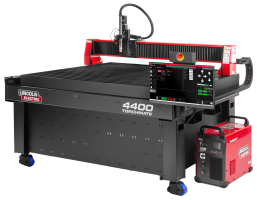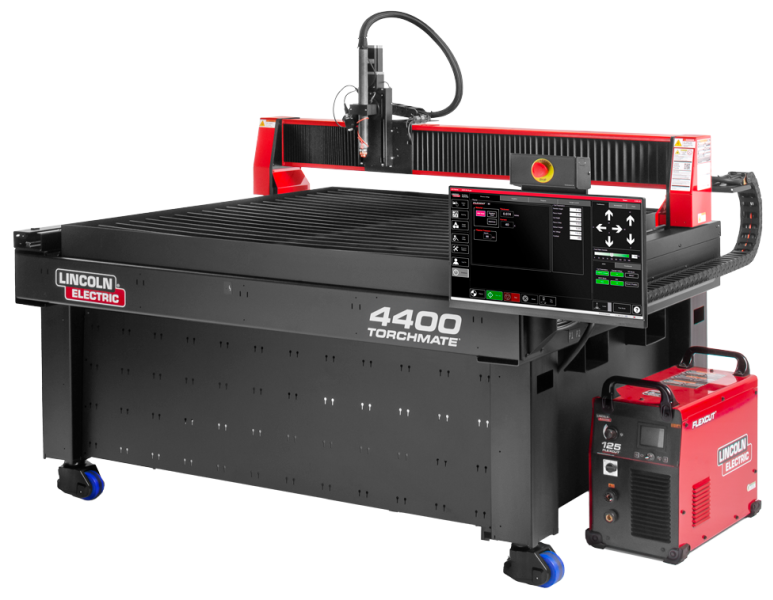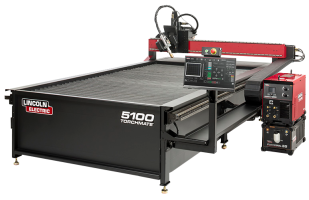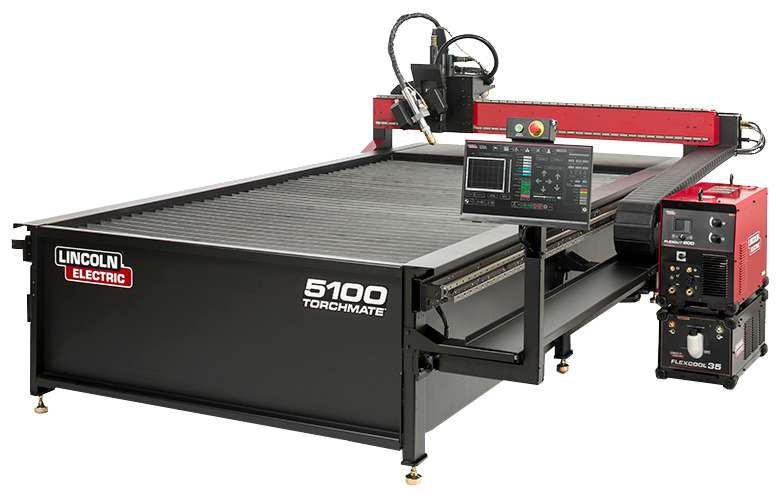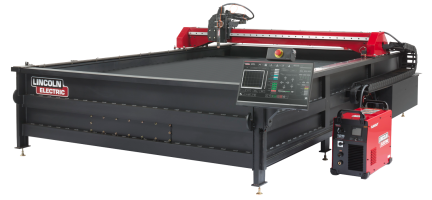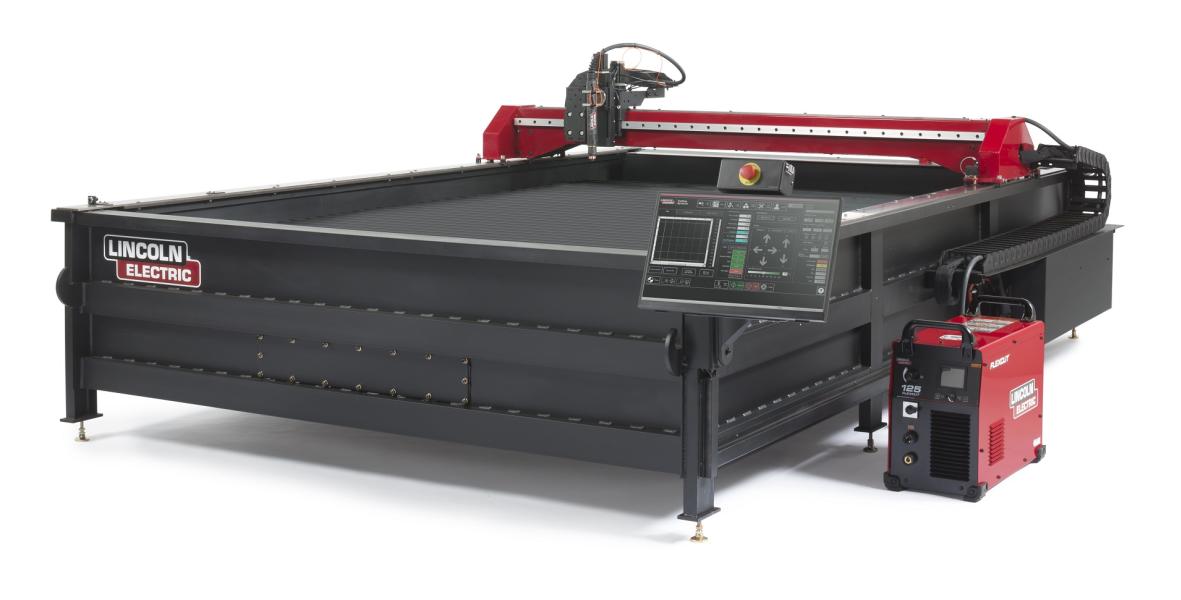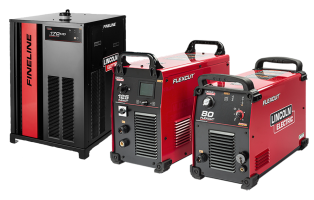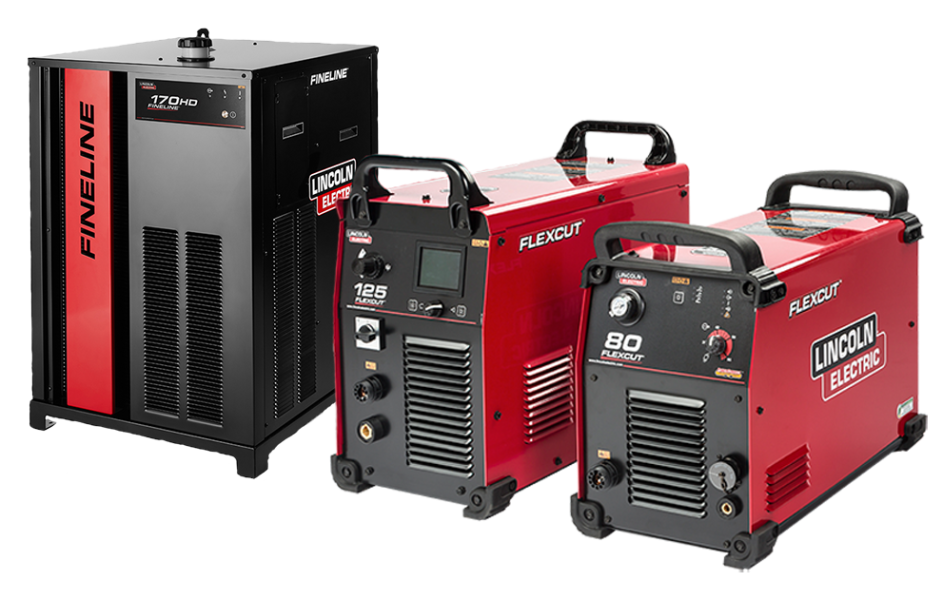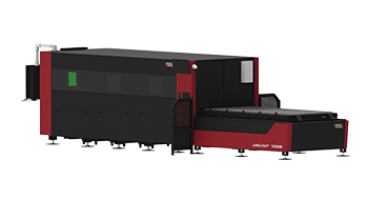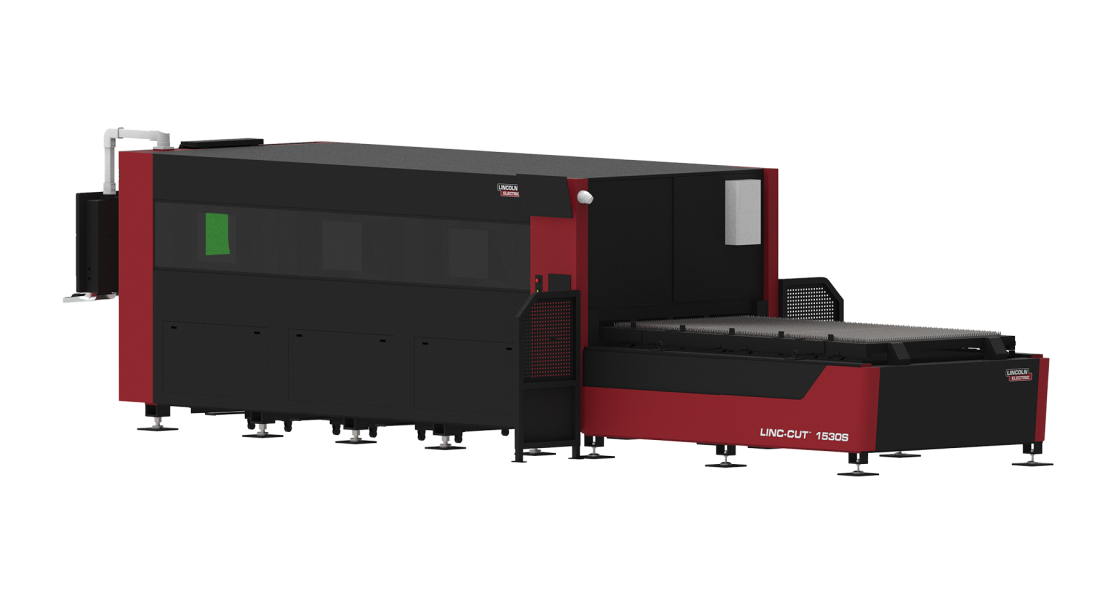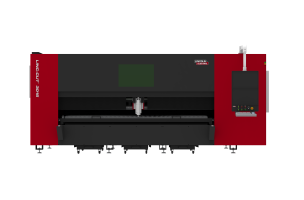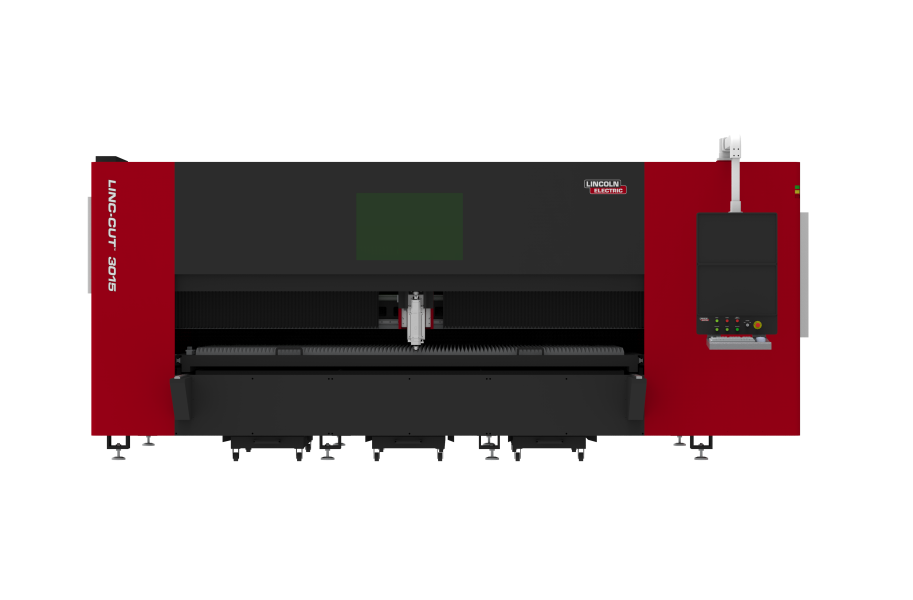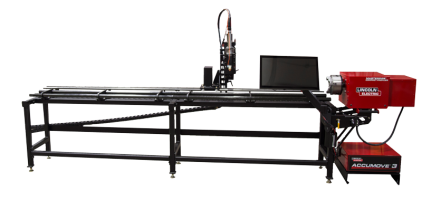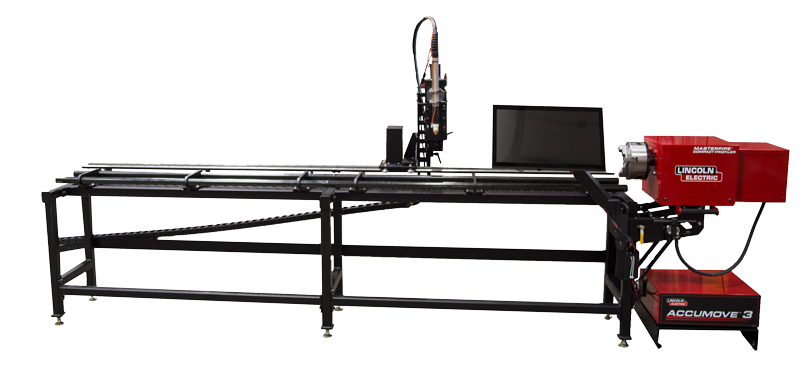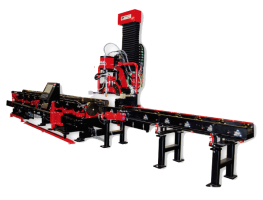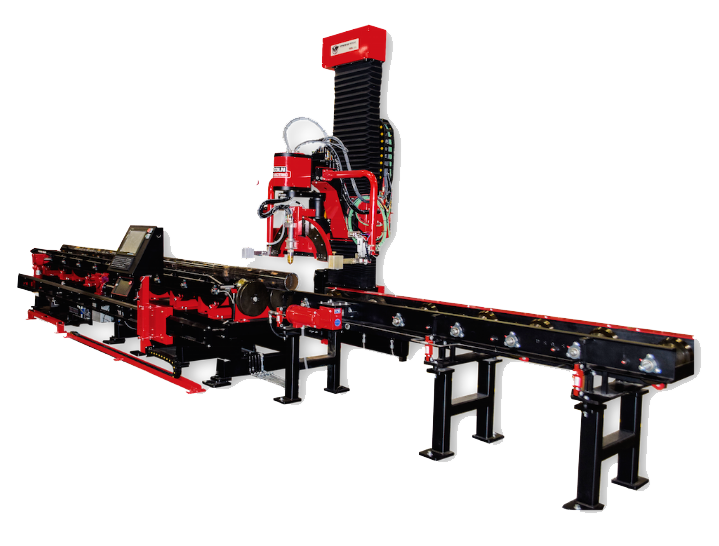Nesting
Torchmate CAD/CAM allows for multiple parts to automatically be rearranged maximizing the use of material space. This feature is called nesting and can be used on any part drawn in Torchmate CAD/CAM. The nesting feature uses a defined material size as its guide to arranging parts. In the Layout > Material Size the size and orientation of the work area can be defined.
Before nesting can be done all of the objects must be selected, Torchmate CAD will only nest selected objects. Go to Edit > Select All, CTRL-A, or F3 can be used as shortcuts.
To access the nesting options go to Arrange > Nesting.

Once nesting is selected the top toolbar will change to the nesting options.

Nesting Options:
Starting Corner – Choose a corner that the nesting will originate from.
Nesting Direction – The direction that the nesting will proceed based on the starting corner.
Rotation – Specifies how much each part will be rotated, this is a step rotation so if 60 degrees is specified each part will be turned in 60 degree increments resulting in six possible orientations. The smaller the number is (excluding zero) the more processes the computer will take calculating the nesting.
Nesting Border – This specifies the distance between parts and the edge of the material sheet.
Clearance Between Parts – The minimum distance maintained between parts once arranged.
Error Factor of Clearance – During the nesting process, approximations are made that are based on the magnitude of shapes being nested. Setting a small Error Factor will produce more consistent spacing between shapes but increase the processing time. A larger Error Factor will create less consistent spacing but decrease the processing time of the nesting.
Allow Mirrored Parts – This allows objects to be flipped around to better nest them.
Keep Groups Intact – If this option is off grouped objects will be separated when nested.
Include Toolpaths – Accounts for the diameter of the toolpath in the nesting calculations.
Block Nesting – When selected treats each object as a simple box.
Nest Parts in Part’s Holes – This option allows small parts to be moved into larger cutout areas.
Select a Sheet – Allows a specific sheet to be used to put the nesting results on.
Apply – Takes the current settings and begins the nesting process.
Close – Cancels the nesting and returns to the main CAD window, no parts will be nested.
Once apply is selected the nesting process will begin. The process can take several minutes to complete depending on the settings. Nesting can be done as many times as necessary with changes in settings or additional parts added in.




